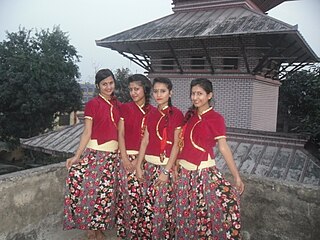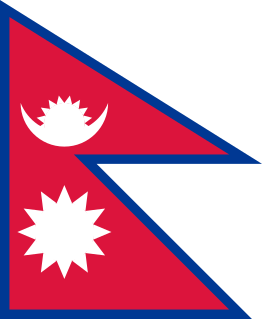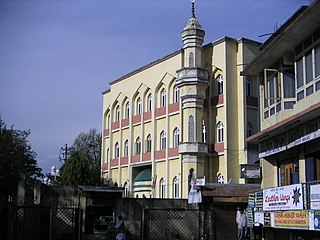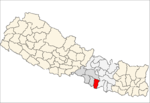
In the 2011 census, Nepal's population was approximately 26 million people with a population growth rate of 1.35% and a median age of 21.6 years. In 2016, the female median age was approximately 25 years old and the male median age was approximately 22 years old. Only 4.4% of the population is estimated to be more than 65 years old, comprising 681,252 females and 597,628 males. 61% of the population is between 15 and 64 years old, and 34.6% is younger than 14 years. In 2011, the Birth rate is estimated to be 22.17 births per 1,000 people with an infant mortality rate of 46 deaths per 1,000 live births. Compared to the infant mortality rate in 2006 of 48 deaths per 1000 live births, the 2011 IMR is a slight decrease within that 5-year period. Infant mortality rate in Nepal is higher in rural regions at 44 deaths per 1000 live births, whereas in urban regions the IMR is lower at 40 deaths per 1000 live births. This difference is due to a lack of delivery assistance services in rural communities compared to their urban counterparts who have better access to hospitals and neonatal clinics. Life expectancy at birth is estimated to be 67.44 years for females and 64.94 years for males. The mortality rate is estimated to be 681 deaths per 100,000 people. Net migration rate is estimated to be 61 migrants per 100,000 people. According to the 2011 census, 65.9% of the total population is literate.

Nepal, officially the Federal Democratic Republic of Nepal, is a country in South Asia. It is located mainly in the Himalayas, but also includes parts of the Indo-Gangetic Plain. It is the 49th largest country by population and 93rd largest country by area. It is landlocked, and borders China in the north and India in the south, east and west, while Bangladesh is located within only 27 km (17 mi) of its southeastern tip and Bhutan is separated from it by the Indian state of Sikkim. Nepal has a diverse geography, including fertile plains, subalpine forested hills, and eight of the world's ten tallest mountains, including Mount Everest, the highest point on Earth. Kathmandu is the capital and the largest city. Nepal is a multiethnic country with Nepali as the official language.
The Gurung people, also called Tamu(ཏ་མུ), are an ethnic group from different parts of Nepal. They are one of the main Gurkha tribes. They are densely populated in Manang, Mustang, Kaski, Lamjung, Gorkha, Parbat and Syangja district. According to 2011 Census, the total population of Gurung is 522,641.
Buddhism in Nepal started spreading since the reign of Ashoka through Indian and Tibetan missionaries. The Kiratas were the first people in Nepal who embraced Gautama Buddha’s teachings, followed by the Licchavis and Newars. Buddha was born in Lumbini in the Shakya Kingdom. Lumbini is considered to lie in present-day Rupandehi district, Lumbini zone of Nepal. Buddhism is the second-largest religion in Nepal. According to 2001 census, 10.74% of Nepal's population practiced Buddhism, consisting mainly of Tibeto-Burman-speaking ethnicities, the Newar. However, in the 2011 census, Buddhists made up just 9% of the country's population. It has not been possible to assign with certainty the year in which Prince Siddhartha, the birth name of the Buddha, was born, it is usually placed at around 563 BCE. In Nepal's hill and mountain regions Hinduism has absorbed Buddhist tenets to such an extent that in many cases they have shared deities as well as temples. For instance, the Muktinath Temple is sacred and a common house of worship for both Hindus and Buddhists.

Hinduism is the main and largest religion of Nepal. The Constitution of Nepal has established a call for the protection of this age-old religion throughout the country.In 2007 the country declares itself that it is a secular country while some special privileges were also given to Hinduism. According to the 2011 census, the Hindu population in Nepal is estimated to be around 22,493,649 which accounts for 85% of country's population. The national calendar of Nepal, Vikram Samvat, is a solar Hindu calendar essentially the same to that widespread in North India as a religious calendar, and is based on Hindu units of time.

Chhetri, historically called Kshettriya or Kshetriya or Khas are Nepali speakers of Khas community some of whom trace their origin to migration from medieval India. Chhetri was a caste of administrators, governor and military elites in medieval Khas Kingdom and Gorkha Kingdom. The nobility of Gorkha Kingdom were mainly based from Chhetri families and they had a strong presence in civil administration affairs. The bulk of Prime Ministers of Nepal before democratization of Nepal belonged to this caste as a result of old Gorkhali aristocracy. Gorkha-based aristocratic Chhetri families were Pande dynasty, Basnyat dynasty, Thapa dynasty and Kunwars.

Jajarkot District a part of Karnali province, is one of the seventy-seven districts of Nepal. The district, with Khalanga as its district headquarters, covers an area of 2,230 km2 (860 sq mi) and has a population of 171,304 in 2011 Nepal census.

The administrative divisions of Nepal are subnational administrative units of Nepal. The first level of country subdivisions of Nepal are the Provinces. Each province is further subdivided into districts, and each district into municipalities and rural municipalities. Before 2015, instead of provinces, Nepal was divided into developmental regions and administrative zones.

Islam is a minority religion in Nepal. According to the 2011 Nepal census, Nepal has 1 million Muslims comprising 4.4% of the population of Nepal.

Nepalis are the Indo-Aryan and Sino-Tibetan citizens of Nepal under the provisions of Nepali nationality law. The country is home to people of many different national origins. As a result, people of Nepal do not equate their nationality with ethnicity and language, but with citizenship and allegiance. Although citizens make up the majority of Nepalese, non-citizen residents, dual citizen, and expatriates may also claim a Nepalese identity. Nepalese are descendants of migrants from parts of India, Tibet, and parts of Burma and Yunnan, and much further traces origin to Central Asia, along with indigenous peoples. Nepal is a multicultural and multiethnic country. Kathmandu Valley, in the middle hill region, constitutes a small fraction of the nation's area but is the most densely populated, with almost 5 percent of the nation's population.

The 2011 National census lists 123 Nepalese languages spoken as a mother tongue in Nepal. The discovery of six additional languages since then brings the count to 129. Most belong to the Indo-Aryan and Sino-Tibetan language families. Nepali is the official language, but the other first languages are all recognized national languages.

A Village Development Committee (VDC) in Nepal was the lower administrative part of its Ministry of Federal Affairs and Local Development. Each district had several VDCs, similar to municipalities but with greater public-government interaction and administration. There were 3,157 village development committees in Nepal. Each VDC was further divided into several wards depending on the population of the district, the average being nine wards.
The 1991 Nepal census was a widespread national census conducted by the Nepal Central Bureau of Statistics.

Shivanagar is a town in Krishnanagar Municipality in Kapilvastu District in the Lumbini Zone of southern Nepal. The former VDC was merged to form the municipality established on 18 May 2014 Krishnanagar, Sirsihawa, Shivanagar VDCs. At the time of the 2011 Nepal census it had a population of 4,774 people living in 735 individual households.
Nepali Americans or Nepalese Americans are Americans whose ethnic origins lie fully or partially in any part of Nepal. Their migration to the United States began in the 20th century, and they have been able to establish themselves as Americans in this new land. The history of immigration to America from Nepal is short in comparison to other ethnic groups.
Nepal conducted a widespread national census in 2011 by the Nepal Central Bureau of Statistics. Working with the 58 municipalities and the 3915 Village Development Committees at a district level, they recorded data from all the municipalities and villages of each district. The data included statistics on population size, households, sex and age distribution, place of birth, residence characteristics, literacy, marital status, religion, language spoken, caste/ethnic group, economically active population, education, number of children, employment status, and occupation.
The 2001 Nepal census was conducted by the Nepal Central Bureau of Statistics. According to the census, the population of Nepal in 2001 was 23,151,423. Working with Nepal's Village Development Committees at a district level, they recorded data from all the main towns and villages of each district of Nepal. The data included statistics on population size, households, sex and age distribution, place of birth, residence characteristics, literacy, marital status, religion, language spoken, caste/ethnic group, economically active population, education, number of children, employment status, and occupation.

Nepali is an Indo-Aryan language of the sub-branch of Eastern Pahari. It is the official language of Nepal and one of the 22 scheduled languages of India. Also known by the endonym Khas kura, the language is also called Gorkhali or Parbatiya in some contexts. It is spoken mainly in Nepal and by about a quarter of the population in Bhutan. In India, Nepali has official status in the state of Sikkim and in the Darjeeling Sadar subdivision and Kalimpong district of West Bengal. It has a significant number of speakers in the states of Arunachal Pradesh, Assam, Himachal Pradesh, Manipur, Mizoram and Uttarakhand. It is also spoken in Myanmar and by the Nepali diaspora worldwide. Nepali developed in proximity to a number of Indo-Aryan languages, most notably the other Pahari languages and Maithili and shows Sanskrit influence. However, owing to Nepal's location, it has also been influenced by Tibeto-Burman languages. Nepali is mainly differentiated from Central Pahari, both in grammar and vocabulary, by Tibeto-Burman idioms owing to close contact with this language group.

Sundar Haraicha is a municipality in Morang District of Province No. 1 in Nepal that was established on 10 March 2017 by merging the former municipalities Sundar Dulari and Koshi Haraicha. At the time of the 2011 Nepal census, the localities formed had a joint population of 80,518 people living in 18,610 individual households.













